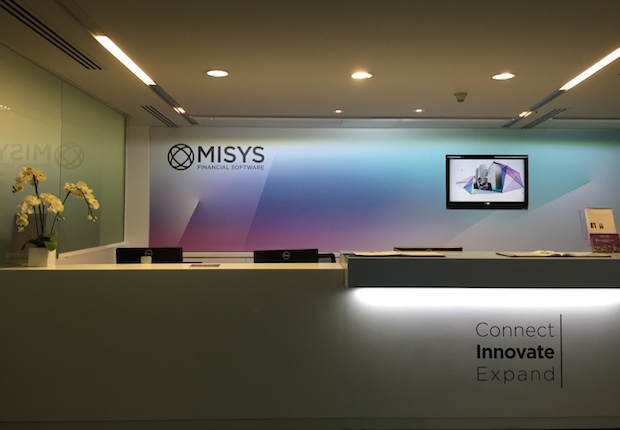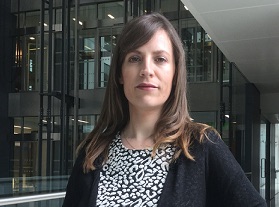
Having been through a number of acquisitions and a benefits harmonisation project in recent years, financial services software provider Misys is now primarily focused on the health, wellbeing and engagement of its employees.
For Anne Teggart, global head of benefits, a major part of the harmonisation was to review the company’s existing pension provision. The organisation previously had a closed defined benefit (DB) scheme, a trust-based defined contribution (DC) scheme, and also two legacy group personal pensions (GPPs). Teggart joined the organisation in 2014, and during her first month joined a pension trustee meeting where it became evident that the schemes needed an overhaul. The majority (90%) of the trust-based DC plan members were deferred, so Teggart and an adviser evaluated how best to create a pensions provision that would be simple to run, to manage and to administer.
Teggart explains: “We looked at: what is the population; how is it run; how much do we spend. I took that to my manager and the leadership team, and said ‘these are the various options, and this is our recommendation in terms of what we could save over one, three, five years’. In the meantime, I’d also gone back to the trustees and let them know that I was doing a review of the pension because of the whole complexity of the plan to see if we could make efficiencies anywhere.”
New pension launched
In December 2014, Misys selected a GPP, provided by Fidelity, which launched in April 2015 after two months’ consultation with staff in January and February. The new GPP was set up to deal with upcoming complexities such as the charges cap on default funds in April 2015, as well as the new pension freedoms.
The launch of the new scheme tied in with the annual flexible benefits enrolment window in March, so the benefits team was able to tie in presentations about the pensions with the benefits fair. They have also continued pensions communications this year, in part due to the reduction in the annual allowance, and also to increase employees’ understanding of their benefits.
“It’s amazing to see the engagement from employees, their understanding has increased, and the types of questions I’m getting are surprising,” says Teggart. “Prior to the project, we had around 95% of people in the default, that’s come down to around 73%. It’s been a real change and I put that down to the increased understanding. We know inertia can kick in. If people haven’t been communicated to before or regularly, they think they’ll deal with it later and never pick it up.”
Its work around the launch of its new GPP won Misys the award for Best DC pension change at the 2016 Employee Benefits Awards in June.
Employee health and wellbeing
A key focus for the coming months is now to look at the health, wellbeing, and engagement of employees. “It’s a global strategy that I’m working on,” explains Teggart.
“It’s not just a nice to-do, as with everything there has to be some kind of return on investment [ROI] that helps to get the senior leadership team’s buy-in. If we have happy employees they will be more productive; if we look after our employees everything else will look after itself.”
Being at the forefront of the financial services technology arena means Misys aims to help its own customers to be efficient, competitive and resilient. With this in mind, it aims to do the same for its employees, which its global wellbeing and engagement strategy will support.
Teggart says: “We are looking into how we make our employees more resilient and what else we can do to ensure that our employees are healthy, engaged, motivated. We’ve got a broad range of ages across the globe, roughly 4,700 employees in 50 countries, so for us, there is naturally going to be quite a wide spectrum and differences for our employees.
“Looking at those differences, they’re going to have their own personal needs outside of work as well as inside work, so what can we do to take the pressure off as much as we can? That’s where the whole wellbeing and engagement strategy is coming from.”
Teggart explains that she breaks it down into three buckets: financial wellbeing, mental wellbeing, or resilience, and physical wellbeing. “We’re now working with our regional HR teams to look at what we can do. We’re working with our brokers on a number of things, just to see what we can do, whether that’s through the medical insurer being able to do free on-site health checks, whether it’s working with our facilities team and their vendor for ergonomic assessments; or what we can do that is going to differentiate us from our competitors, and to motivate our employees.
“Financial wellbeing for me is quite important because we work with financial institutions, so for us, that could be a real game-changer in terms of making our employees more financially savvy on the personal side as well,” she says.
Misys has multiple generations of employees within its workforce so financial wellbeing will need to address different issues: for example, new graduates joining the organisation may have student loan issues and debt worries; while mid-career employees may be saving for a house or to support a family.
“Then we’ve got people who are older who are thinking ‘have I made the right investment decisions around my retirement? What support can the [organisation] give me around retirement?’” Teggart says.
Teggart and the HR teams have already begun work on putting the wellbeing strategy together to form a joined-up approach that employees can buy into.
Teggart says: “Like anything it won’t be stale, or something we only launch once, it’s going to be ever-evolving, it’s going to change with our business needs and whatever else is happening.
“With our annual operating plan we have set our employees stretched targets, like any [organisation], you’re not just going to manage the status quo. We want to make sure that our employees are healthy and there are these three key areas to help us continue on our journey at being more successful.”
Misys at a glance
Misys is a financial services technology provider and was founded in 1979. It has around 4,700 employees working in 50 countries; 460 of which are in the UK. The average length of service for UK employees is eight years.
The main job functions at Misys include the development team, as well as customer support, product management, quality assurance, sales, and professional services.
Business objectives
- To drive evolutionary and essential transformation.
- To help banks to become digital businesses and improve people’s lives.
- To deliver innovation, speed and agility to banks through an open cloud ecosystem.
 Career history
Career history
Anne Teggart, global head of benefits, joined Misys in April 2014. Prior to this, she was head of reward for Europe at Sapient. Teggart previously worked at Sony Pictures as international compensation and benefits manager, and reward analyst at the BBC.
Teggart recognises the effect that work in reward and benefits can have on a business. She says: “Everything that you do has a direct impact on the business, whether that’s with employees: their happiness; their productivity; their sentiment towards the organisation, and that then feeds into the [organisation’s] overall bottom line, and how successful the [organisation] is as well. I do like that direct correlation; everything that we do, and should be doing, does have that impact on the business.”
The benefits offered by Misys
Pension
- A group personal pension open to all employees. Misys offers a matching contribution scheme if the employee contributes up to 6%, 8% or 10%, depending on job level.
Group risk
- Group income protection: employer-paid, the default level is 75%, and employees can flex up or down.
- Critical illness insurance for all: employee-paid, with the option to add partners.
- Life insurance: employer-paid for employees, and employees can pay for their partner. Default level is four-times salary, and employees can flex up to eight-times salary.
Healthcare and wellbeing
- Private medical insurance: employer-paid for single cover for all employees, and family cover for senior employees.
- Dental plan for all employees, with four levels of cover available.
- Gym membership available via salary sacrifice.
- Employee assistance programme.
Company cars and travel
- Car allowance for certain job levels.
- Green car scheme through flex.
- Season-ticket loan.
- Bikes-for-work scheme.
Family-friendly and work-life balance
- 25 days’ annual leave, with the option to buy or sell up to five days a year.
- Childcare voucher scheme.
- Family Christmas party for charity.
Other
- Give-as-you-earn scheme.
- Local charity fundraising.
- Voluntary benefits scheme.